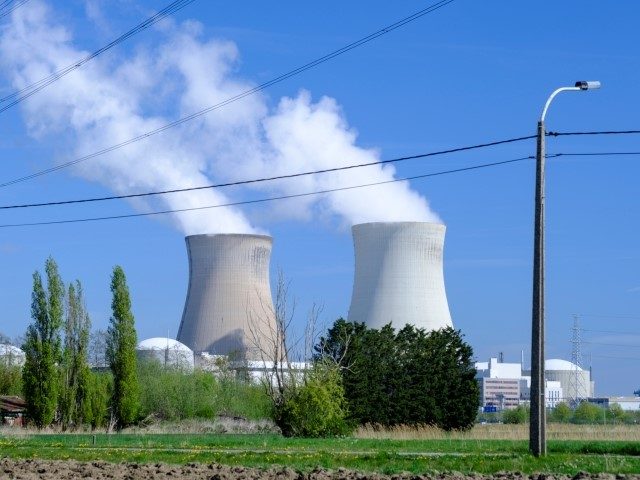Nuclear power in the United States dates back to 1958, peaking at 104 operating nuclear reactors in 2012, but plants have been closing steadily since.
The Energy Information Administration (EIA), a major source of federal open data, and the Congressional Research Service (CRS) revealed how the domestic energy resource fits into the U.S. energy landscape.
But while the number of reactors now stands at 93, electricity generation has actually increased, according to the EIA:
According to the U.S. Nuclear Regulatory Commission as of November 2021, there were 23 shut down commercial nuclear power reactors at 19 sites in various stages of decommissioning.
In 2013 through 2019, annual nuclear generation capacity and electricity generation increased each year (except in 2017) even as the number of operating reactors declined. Power plant uprates—modifications to increase capacity—at nuclear power plants have made it possible for the entire operating nuclear reactor fleet to maintain a relatively consistent total electricity generation capacity. These uprates, combined with high-capacity utilization rates (or capacity factors), helped nuclear power plants maintain a consistent share of about 20% of total annual U.S. electricity generation from 1990 through 2021. Some reactors also increased annual electricity generation by shortening the length of time reactors are offline for the refueling.
The CRS released a report on June 10, 2021, on the commercial nuclear industry.
The report details how many reactors have shut down and names seven more projected to close through 2025:
Another seven U.S. reactor retirements have been announced through 2025, with total generating capacity of 7,109 MW (equal to roughly 7 percent of U.S. nuclear capacity). However, announced retirements have not always occurred as planned: 16 reactors previously announced for permanent closure have continued operating pursuant to state interventions that provide them with additional revenue sources. Those 16 reactors, in 6 states, represent 15,734 MW of electricity generation capacity (16 percent of total U.S. nuclear capacity). Many other U.S. reactors have been identified by recent studies as being “at risk” of shutdown for economic reasons, although their closures have not been announced.
Economic pressure on nuclear power plants is less immediate in areas of the country where electricity prices are set by state regulators rather than markets, such as in much of the Southeast. Under such “traditional” rate regulation, all power plant expenditures must be approved by state regulators, and electricity customers are charged rates sufficient to recover those costs plus a reasonable investment return. However, many other factors can affect plant-specific costs, revenues, and operating profits.
The recent U.S. nuclear power plant retirements and announced future shutdowns have drawn substantial congressional attention, including proposed legislation, committee hearings and markups, and enacted authorizations and appropriations. For example, the Senate Energy and Natural Resources Committee held a hearing on nuclear energy March 25, 2021, at which concerns about nuclear plant shutdowns were raised.
The CRS report includes a portion on the political nature of the nuclear industry:
“The recent U.S. nuclear power plant retirements and announced future shutdowns have drawn substantial congressional attention, including proposed legislation, committee hearings and markups, and enacted authorizations and appropriations. The Senate Energy and Natural Resources Committee held a hearing on nuclear energy March 25, 2021, which included a focus on existing U.S. nuclear plants. Chair Joe Manchin said in his opening statement, “Lifetime extensions are cheaper than new builds and are generally cost competitive with other generation technologies. We cannot afford to let this carbon-free energy resource fade out.”
Sen. Manchin (D-WV) subsequently sent a letter to President Biden urging him “to take action to preserve our existing nuclear fleet and prevent further closures.”
Nuclear plant closures were discussed at a May 6, 2021, hearing by the House Appropriations Subcommittee on Energy and Water Development on the DOE FY2022 budget request. Under questioning, Energy Secretary Jennifer M. Granholm pledged to work with Congress to find ways to keep existing reactors operating, a goal that was supported by Subcommittee Chair Marcy Kaptur (D-OH).
The 10th anniversary of the March 2011 Fukushima nuclear reactor meltdowns in Japan also prompted congressional comment on the future of U.S. nuclear power, especially the safety of existing plants. Senator Ed Markey (D-MA) — Chair of the Subcommittee on Clean Energy, Climate, and Nuclear Safety of the Environment and Public Works Committee — issued a statement on the Fukushima anniversary calling on the Nuclear Regulatory Commission (NRC) to ensure that the lessons of Fukushima are applied to existing U.S. reactors and not relaxed to ensure nuclear industry profitability.
The 116th Congress enacted the Energy Act of 2020 (Division Z of P.L. 116-260), which authorized appropriations for DOE’s ongoing “sustainability” research and development program to improve the economics, safety, and continued operation of existing nuclear power plants. Division D of P.L. 116-260 provided appropriations of $47 million for the sustainability program for FY2021, the same as in FY2020.
Follow Penny Starr on Twitter.

COMMENTS
Please let us know if you're having issues with commenting.